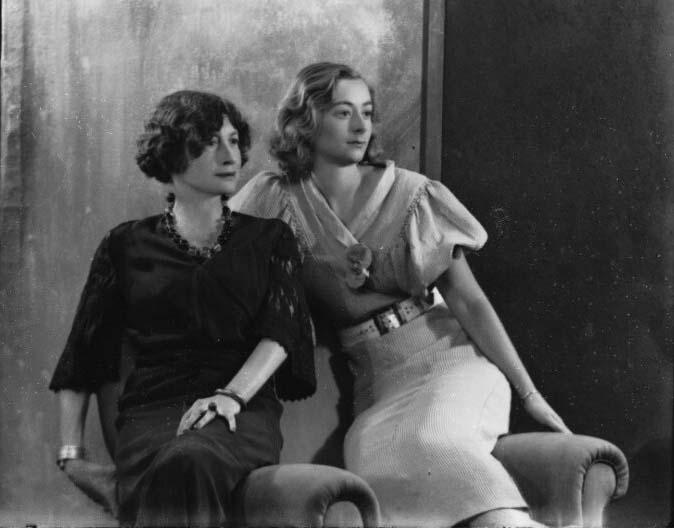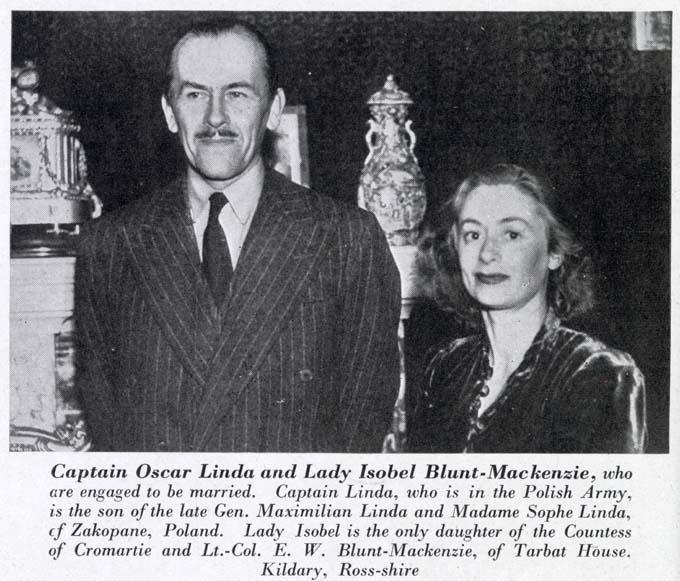During the year 1947 there were 44,411 marriages registered in Scotland. These records have now been made available to search, view and save on Scotland's People alongside the release of births from 1922 and deaths from 1972. The Registrar General’s Report of 1947 noted that the months of April, June, July and December were most popular for marriage, with ‘the adage against May marriage [marry in May rue the day] having lost none of its potency.’
Religious marriage ceremonies, solemnised by a minister, were still the most popular method of marriage, with 36,232 being undertaken in 1947. Civil marriages, however, were gaining in popularity with a 1.4% rise from the previous year, totalling 7,968 of the total number of marriages. The remaining marriage entries are attributed to those marrying either with a Sheriff’s Licence or by a Decree of Declarator (a formal recognition of marriage ‘by cohabitation with habit and repute’) through the Court of Session.
One society wedding which occurred that year was between Lady Isobel Blunt-Mackenzie and Captain Oscar Linda of the Polish Army on 22nd November 1947 in St Lawrence’s Church, Dingwall. Lady Isobel was the only daughter of the Countess of Cromartie, Sibel Sutherland-Leveson-Gower and Colonel Edward Walter Blunt-Mackenzie.

Detail from the marriage entry of Captain Oscar Linda and Lady Isobel Blunt-Mackenzie
Crown copyright, National Records of Scotland (NRS), Statutory Register of Marriages, 1947, 062/47 page 24
Lady Isobel was born on 22nd March 1911 in Kensington, London, England. As a young woman she enjoyed adventure and exploring the world. At 22 years old, the Dundee Courier reported that she had set out with her friend Miss Daphne Day to journey along the canals of Holland on a barrage, navigating the boat themselves. This had followed another cruise along the Mediterranean on board a Norwegian cargo boat where Lady Isobel had signed on as a fourth mate and Miss Day as a second wireless operator (30th August 1933).
Six months later, on 14th March 1934, the Leeds Mercury reported that she was leaving Liverpool ‘for the East aboard a cargo-boat. Later she will join a caravan travelling across the desert from Beirut to Baghdad.’
In September of that year, The Tatler wrote that ‘Lady Isobel’s zest for travel is almost insatiable. She has made several desert journeys and her adventurous spirit has also led her to explore little known parts of Persia. When she returned from Trinidad several crocodiles and three morocoys (land turtles) were among her luggage. When not abroad Lady Isobel Blunt Mackenzie spends a good deal of time at her parents’ Scottish home, Tarbat House.'

Lady Isobel Blunt-Mackenzie (later Lady Isobel Linda) and Sibel Lilian Mackenzie, Countess of Cromartie
Image by Bassano Ltd, half-plate glass negative, 22 June 1934. NPGx105026.
© National Portrait Gallery, London. More images of Lady Isobel can be seen on The National Portrait Gallery’s website.
On the day of her wedding, the bride wore her mother’s wedding gown of white brocade, which had last been worn at her own wedding in 1899, and her grandmother’s veil. Lady Isobel was accompanied by Miss Margaret Fiddes Watt, who the Sunday Post described the following day as ‘her companion on many adventurous expeditions into out-of-the-way parts of the world.'
In April 1936, the Aberdeen Press and Journal informed its readers that Lady Isobel ‘has made a reputation for herself as an explorer of the desert. She left on Sunday for Algeria in the company of Miss Margaret Fiddes Watt, the daughter of [George] Fiddes Watt, the well-known artist. They will first go down to Tunis, and then, if possible, tour the desert. Miss Fiddes Watt has just returned from Paris where she has taken her Cordon Bleu diploma.’
The bride had two brothers, Lord Tarbet, who was the best man, and the Hon. Walter Blunt-Mackenzie, both her seniors (her sister Lady Janet had died in infancy). She was given away by her 87-year-old father. Colonel Blunt-Mackenzie had been commissioned in the Royal Artillery in 1880 and served for eight years in India. He later served with the Royal Horse Artillery and served with Lord Kitchener in Egypt. When the First World War commenced in 1914, he was given the command of a division and served in Gallipoli and France.
As a nod to the groom’s heritage, a Polish choir supplied the music at the wedding ceremony. Afterwards, the reception was held in the family home, Tarbat House, Kildary. The Dundee Courier reported that there were 400 guests at the reception who wished the couple all the best as they were piped away on their honeymoon to the tune ‘A Highland Wedding.’
The bride and groom had met during the Second World War when Lady Isobel had served as a dispatch rider with the Polish Armed Forces. She had been in the West Indies when war was announced and it was with some difficulty that she sourced a ship bound for Europe to play her part in the war effort (The Aberdeen Press and Journal 1st October 1947). Captain Oscar Linda was the son of the late General Maximilian Linda (who was killed during the conflict) and Madame Sophe Linda of Zakopane, Poland. The engagement was announced on 30th September 1947.

Captain Oscar Linda and Lady Isobel Blunt-Mackenzie’s engagement announced in The Tatler, Wednesday 15th October 1947
Credit: © Illustrated London News Ltd/Mary Evans
At the time of their marriage, Captain Linda was part of the Polish Resettlement Corps. This was an organisation formed by the British Government in 1946 as a holding unit for members of the Polish Armed Forces who had been serving with the British Armed Forces and did not wish to return to a Communist Poland after the end of the Second World War. It aimed to help settle and adjust members of the corps to British life and disbanded in 1949.
Oscar Linda died on 18th June 1991 aged 90 years old. His occupation was given as Foreign Office Worker. His death entry was signed by Margaret Fiddes Watt, who had been Lady Isobel’s bridesmaid at their wedding.
Lady Isobel Linda died 13 years later, on 24th February 2004, aged 92 years old. Her occupation was given as a travel writer.
For further details about the Statutory Register of Marriages please see our online guide.